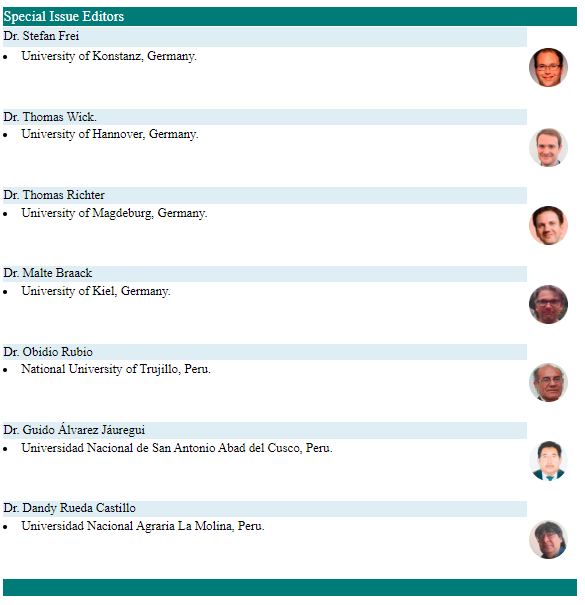The Interconnection Between Calculus of Variations, Partial Differential Equations and Differential Geometry
DOI:
https://doi.org/10.17268/sel.mat.2024.02.11Keywords:
Calculus of variations, functional optimization, partial differential equationsAbstract
Calculus of variations is a fundamental mathematical discipline focused on optimizing functionals, which map sets of functions to real numbers. This field is essential for numerous applications, including the formulation and solution of partial differential equations (PDEs) and the study of differential geometry. In PDEs, calculus of variations provides methods to find functions that minimize energy functionals, leading to solutions of various physical problems. In differential geometry, it helps understand the properties of curves and surfaces, such as geodesics, by minimizing arc-length functionals. This paper explores the intrinsic connections between these areas, highlighting key principles such as the Euler-Lagrange equation, Ekeland’s variational principle, and the Mountain Pass theorem, and their applications in solving PDEs
and understanding geometrical structures.
References
Alexandru Kristaly VDR, Varga C. Variational Principles in Mathematical Physics, Geometry, and Economics: Qualitative
Analysis of Nonlinear Equations and Unilateral Problems. Cambridge: Cambridge University Press; 2009.
Evans LC. Partial Differential Equations. Graduate Studies in Mathematics. vol. 19. American Mathematical Society; 2010.
Ambrosetti A, Rabinowitz PH. Dual variational methods in critical point theory and applications. Journal of Functional
Analysis. 1973;14(4):349-81. Available from: https://www.sciencedirect.com/science/article/pii/
Do Carmo MP. Differential Geometry of Curves and Surfaces. New Jersey: Prentice Hall; 1976.
Goldstein Herbert CPP, Safko JL. Classical Mechanics. 3rd ed. Addison-Wesley; 2001.
Lanczos C. The Variational Principles of Mechanics. Dover Publications; 1986.
Ekeland I. Convexity Methods in Hamiltonian Mechanics. Springer; 1990.
Aubin JP, Ekeland I. Applied Nonlinear Analysis. Wiley-Interscience; 1984.
Palais RS, Smale S. A Generalized Morse Theory. Bulletin of the American Mathematical Society. 1964;70(2):165-72.
Struwe M. Variational Methods: Applications to Nonlinear Partial Differential Equations and Hamiltonian Systems. Springer;
Ambrosetti A, Rabinowitz PH. Dual Variational Methods in Critical Point Theory and Applications. Journal of Functional
Analysis. 1973;14(4):349-81.
Palais RS. The principle of symmetric criticality. Communications in Mathematical Physics. 1979;69:19-30. Available from:
https://doi.org/10.1007/BF01941322.
Baer C. Symmetric Criticality in Riemannian Geometry. Journal of Mathematical Physics. 2004;40(3):2247-71.
Do Carmo M. Riemannian Geometry. Springer; 1992.
Klingenberg W. A Course in Differential Geometry. Springer; 1978.
Milnor J. Morse Theory. Princeton University Press; 1963.
Arnol´d VI. Mathematical Methods of Classical Mechanics. Springer; 1989.
Zeidler E. Nonlinear Functional Analysis and Its Applications. Springer; 1990.
Spivak M. A Comprehensive Introduction to Differential Geometry. vol. 1. Publish or Perish; 1999.
Downloads
Published
How to Cite
Issue
Section
License

This work is licensed under a Creative Commons Attribution 4.0 International License.
The authors who publish in this journal accept the following conditions:
1. The authors retain the copyright and assign to the journal the right of the first publication, with the work registered with the Creative Commons Attribution License,Atribución 4.0 Internacional (CC BY 4.0) which allows third parties to use what is published whenever they mention the authorship of the work And to the first publication in this magazine.
2. Authors may make other independent and additional contractual arrangements for non-exclusive distribution of the version of the article published in this journal (eg, include it in an institutional repository or publish it in a book) provided they clearly state that The paper was first published in this journal.
3. Authors are encouraged to publish their work on the Internet (for example, on institutional or personal pages) before and during the review and publication process, as it can lead to productive exchanges and to a greater and more rapid dissemination Of the published work.












